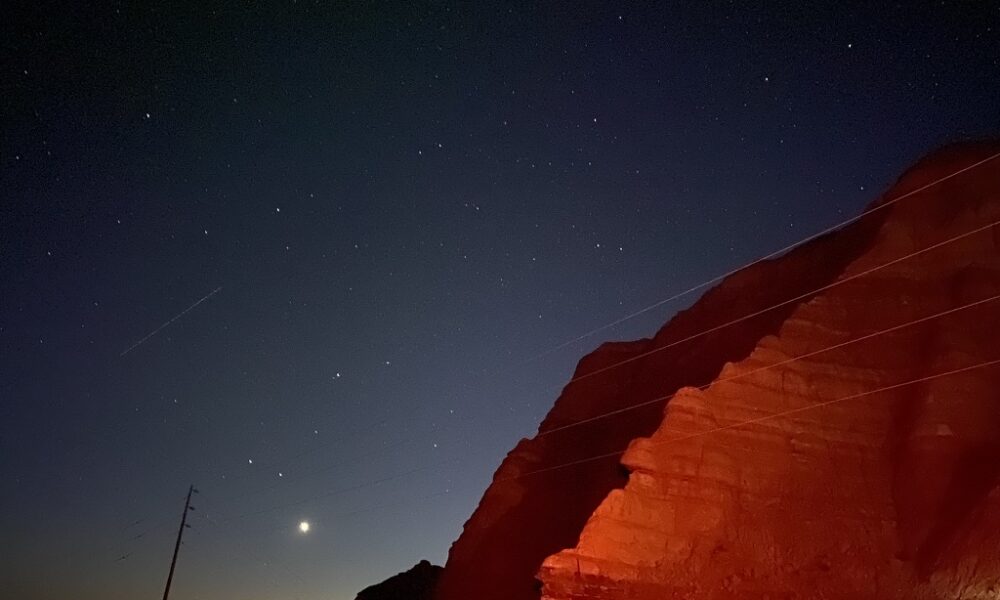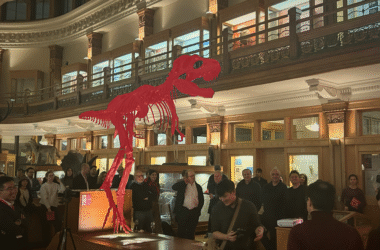On Oct. 3, McGill’s Trottier Space Institute presented a public talk titled “From Clouds to Cosmic Giants: The formation and evolution of galaxies.” This event featured Tracy Webb, associate professor in McGill’s Department of Physics and observational astronomer, who discussed the development of galaxies from the Big Bang to the present day. The talk also highlighted current innovations aimed at demystifying our understanding of these complex systems.
Webb began her talk by discussing the galaxy we call home: The Milky Way. Amongst the whopping hundreds of billions of galaxies in our observable universe, Webb emphasized that the Milky Way is just one of many.
“[The Milky Way] is sort of a regular galaxy in a regular group of galaxies, nothing really special […] except that it is home to us,” Webb stated in her talk.
The composition of galaxies
Galaxies are primarily composed of a large oval called the dark matter halo, which forms the body of a galaxy and accounts for most of its mass. At the center of the halo lies the bulge and disk—made up of stars and surrounded by what’s called the “interstellar medium.” At the very centre of the galaxy resides a supermassive black hole.
“A galaxy has a total mass of [around] 1 to 2 trillion times the mass of our own sun, and that mass is made up of dark matter, which makes up about 90 per cent of the galaxy. Then we have gas and dust making up the next component, around seven per cent, and stars […] only make up about three per cent,” Webb explained.
Galaxy classification
After focusing on the components of a galaxy, Webb shifted to a broader topic: How galaxies are classified. Edward Hubble, astronomer and namesake of the Hubble Space Telescope, came up with a simple classification of galaxies based solely on their shape, known as the Hubble Tuning Fork. The first type of galaxy is elliptical galaxies, and the second is spiral galaxies.
“There’s a whole bunch of galaxies that don’t fit into the Hubble Tuning Fork, [which we] call irregular galaxies,” Webb clarified.
Galaxy formation and growth mechanisms
According to the Big Bang Theory—which is the idea that the universe began as a single point and has been perpetually expanding ever since—galaxies formed approximately one billion years after the beginning of the universe. Galaxies first coalesce as dense packs of gas and grow larger over time by merging with other galaxies. The Milky Way is on a collision course with our neighbouring galaxy, Andromeda, although the impact is still a few billion years away.
Apart from collisions, galaxies also grow by absorbing the cosmic material around them. A more obscure growth mechanism of galaxies has to do with the supermassive black holes at their center, which are suspected of regulating galaxy growth during this process.
The future of telescopes
Webb then moved on to talking about the use of telescopes in studying galaxies. When observing galaxies, telescopes behave as time machines. The images we see of galaxies actually show how they appeared billions of years ago since the further away they are, the longer it takes for light to travel to us. This means that when observing the Andromeda galaxy, we’re observing it 2.5 million years ago, and when observing the furthest galaxies visible through the Hubble Telescope, we’re actually observing them 13 billion years in the past.
The James Webb Telescope is a recent telescope project launched into space that surpasses the Hubble Space Telescope in terms of its observational capabilities. Another upcoming project is the Square Kilometer Array—an international effort to build the world’s largest radio telescope array, which is a network of separate telescopes located across the globe that operate as one.
While many advancements are underway to deepen our understanding of the galaxy, much is left uncertain. The more knowledge we gain on galaxy formation, the better we will understand how the world we live in came to be.






